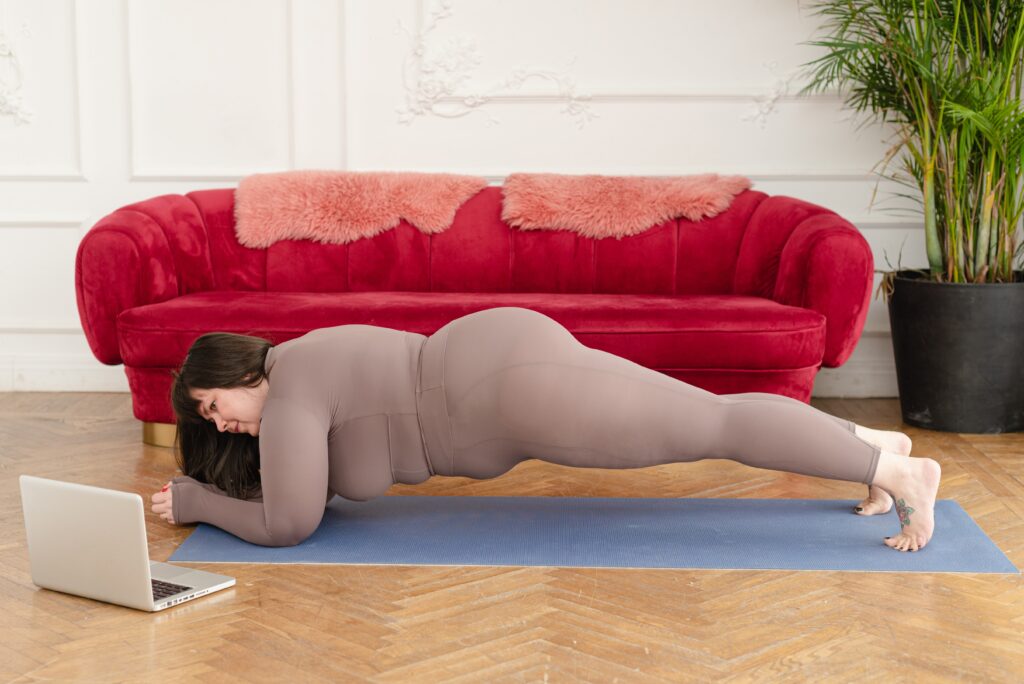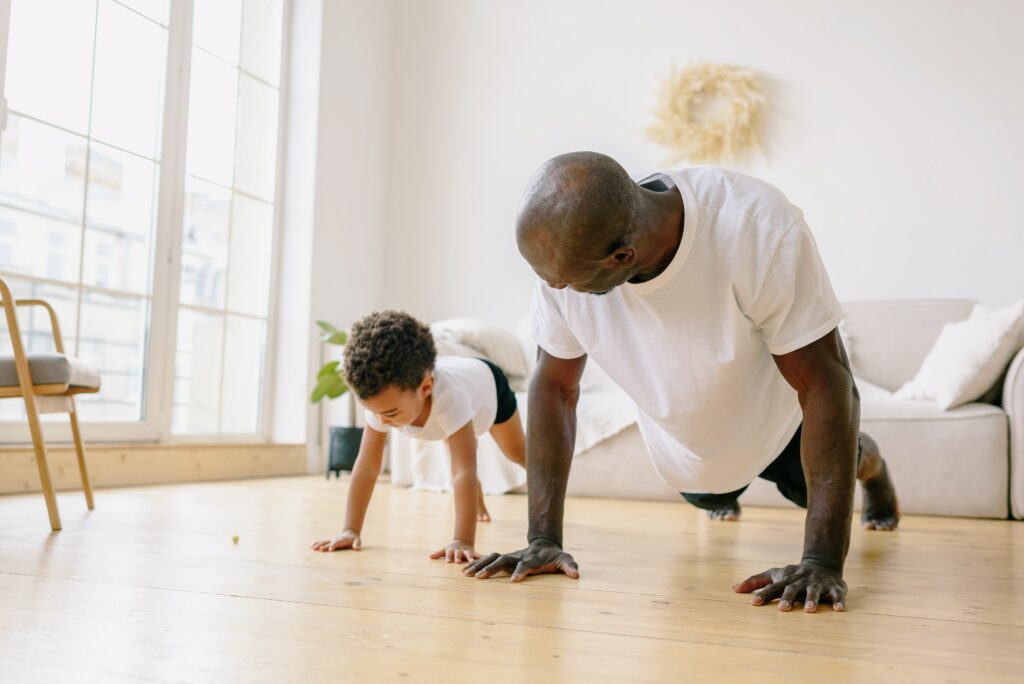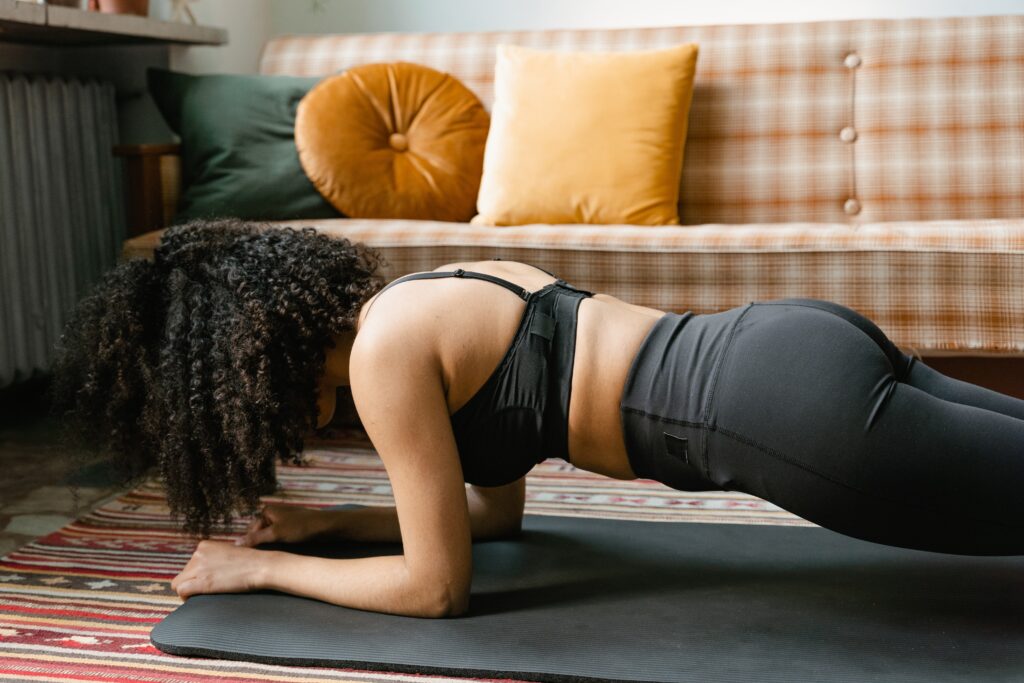In today’s fast-paced world, maintaining a healthy and fit lifestyle has become more important than ever. Regular exercise plays a crucial role in achieving and maintaining overall fitness. One exercise that has gained immense popularity is the plank exercise. Let’s delve into the benefits, proper technique, variations, and tips to get the most out of your plank exercise routine. So, let’s dive in and discover the power of the plank!
Understanding the Plank Exercise
The plank exercise is a simple yet highly effective bodyweight exercise that targets multiple muscle groups simultaneously. It primarily focuses on strengthening the core muscles, including the abdominals, obliques, lower back, and glutes. Unlike traditional crunches or sit-ups, the plank engages the entire core and stabilizer muscles, providing a full-body workout.
Benefits of the Plank Exercise
The plank exercise offers a wide range of benefits for individuals of all fitness levels. Here are some key advantages:
- Core Strength: The plank exercise engages the deep core muscles, helping to build a strong and stable core. This, in turn, improves posture, reduces the risk of back pain, and enhances overall functional strength.
- Improved Balance and Stability: Holding a plank position challenges your balance and activates the muscles responsible for stability. Regular practice can improve your overall balance and coordination.
- Increased Flexibility: While performing planks, you stretch and elongate the muscles in your shoulders, shoulder blades, and collarbone area. This helps to improve flexibility and reduce muscle stiffness.
- Enhanced Metabolism: Planks activate multiple muscle groups simultaneously, leading to an increase in metabolic rate. Regularly incorporating planks into your workout routine can aid in weight management and boost calorie burn.
- Postural Correction: By strengthening the core and improving overall body alignment, planks contribute to better posture. This can alleviate strain on the spine and reduce the risk of postural imbalances.

Proper Technique and Form
To perform the plank exercise correctly:
- Start by positioning yourself face down on the floor.
- Place your forearms flat on the ground, shoulder-width apart.
- Extend your legs straight back, toes tucked under, and raise your body, resting on your forearms and toes.
- Keep your body in a straight line from head to heels, engaging your core muscles.
- Maintain a neutral neck position and gaze towards the floor.
- Hold this position for the desired duration, focusing on maintaining proper form and breathing steadily.

Variations of the Plank Exercise
While the traditional forearm plank is highly effective, incorporating variations can add diversity to your workout routine. Here are a few popular plank variations:
- Side Plank: Lie on one side with your forearm directly beneath your shoulder and lift your body into a sideways position, supported by one forearm and the side of your foot. This variation targets the obliques and improves core stability.
- High Plank: Instead of resting on your forearms, place your hands flat on the ground, shoulder-width apart. Extend your arms fully and support your body on your hands and toes. This variation engages the upper body muscles to a greater extent.
- Plank Jacks: Begin in a forearm plank position and jump both feet out to the sides simultaneously, then jump them back together. Plank jacks provide a cardiovascular challenge while targeting the core muscles.
Tips for Maximizing Your Plank Workout
To make the most of your plank exercise routine, consider the following tips:
- Start Slowly: If you’re new to planks, begin with shorter durations and gradually increase the time as your core strength improves.
- Focus on Form: Proper form is key to maximizing the effectiveness of planks. Maintain a straight line from head to heels and engage your core throughout the exercise.
- Breathe Mindfully: Remember to breathe steadily and avoid holding your breath while planking. Inhale deeply through your nose and exhale through your mouth.
- Add Progression: Once you master the basic plank, challenge yourself by incorporating variations or introducing instability tools like a stability ball or a Bosu ball.
- Stay Consistent: To reap the benefits, make planks a regular part of your fitness routine. Aim for at least three sessions per week, gradually increasing the duration and intensity over time.
Common Mistakes to Avoid
While performing planks, it’s essential to avoid the following common mistakes:
- Arching the Lower Back: Maintain a neutral spine throughout the exercise to prevent excessive strain on the lower back. Engage your core muscles and imagine pulling your belly button toward your spine.
- Dropping the Hips: Keep your body in a straight line from head to heels. Avoid sagging or lifting the hips too high, as this can compromise the effectiveness of the exercise.
- Holding the Breath: Remember to breathe naturally and avoid holding your breath. Deep, rhythmic breathing helps to oxygenate your muscles and maintain focus.
- Overlooking Proper Alignment: Pay attention to your body alignment during planks. Keep your head, neck, and spine in a neutral position, and avoid straining your neck by looking up or down.

Incorporating Planks Into Your Fitness Routine
Planks can be incorporated into your fitness routine in various ways:
- Standalone Plank Workout: Allocate a dedicated time slot for planks and perform them as a standalone workout. Gradually increase the duration and intensity as you progress.
- Circuit Training: Include planks as part of a circuit training routine. Alternate between planks and other exercises to keep your workouts dynamic and challenging.
- Warm-up or Cool-down: Use planks as part of your warm-up or cool-down routine to activate your core muscles and improve stability before or after a workout.
Tracking Your Progress
To track your progress and stay motivated, consider the following methods:
- Duration: Keep a record of the duration you can hold a plank and aim to increase it over time. Gradually progress from 30 seconds to a minute or more.
- Variation Mastery: Challenge yourself by mastering different plank variations. Start with the basic plank and gradually incorporate more advanced variations into your routine.
- Strength and Endurance: Observe improvements in your core strength and overall endurance as you consistently practice planks.
Conclusion
The plank exercise is a versatile and effective exercise for strengthening your core, improving balance, and enhancing overall fitness. By incorporating planks into your workout routine and following proper form and progression, you can reap the numerous benefits it offers. Remember to start slowly, stay consistent, and listen to your body. So, get ready to engage your core and take your fitness to the next level with the power of planks!



As the contemporary world continues to evolve, so do our learning models, making the selection of the optimal online homeschool programs crucial. The flexibility and flexibility of homeschooling are its main attractions, rendering it viable for numerous families worldwide. The beauty of homeschooling is customized education knows no limits; it transcends many subjects and learning approaches.
Based on my experience, superior platforms include Time4Learning, Khan Academy, and IXL. Time4Learning offers an engaging online curriculum for levels PreK-12th, while Khan Academy provides free educational resources for all grade levels. IXL extends thorough, standards-aligned learning for over 8,000 topics. These platforms provide versatility, focusing on personalized learning, which is helpful to each learner's unique needs.
However, it's not just about the platforms but also platforms, but the community too. Active participation in homeschool support communities gives an advantage in both content and experience knowledge sharing.
Yet, your best homeschool resource pick largely depends on your kid's specific needs and interests. Always keep in mind, the objective in the end ought to be to make your kids active and engaged lifelong learners!
Eager to learn more about this? It's time to do some research of your own and be fully ready for your child's beautiful homeschooling journey! https://k12bestonlinehomeschoolprograms8.com